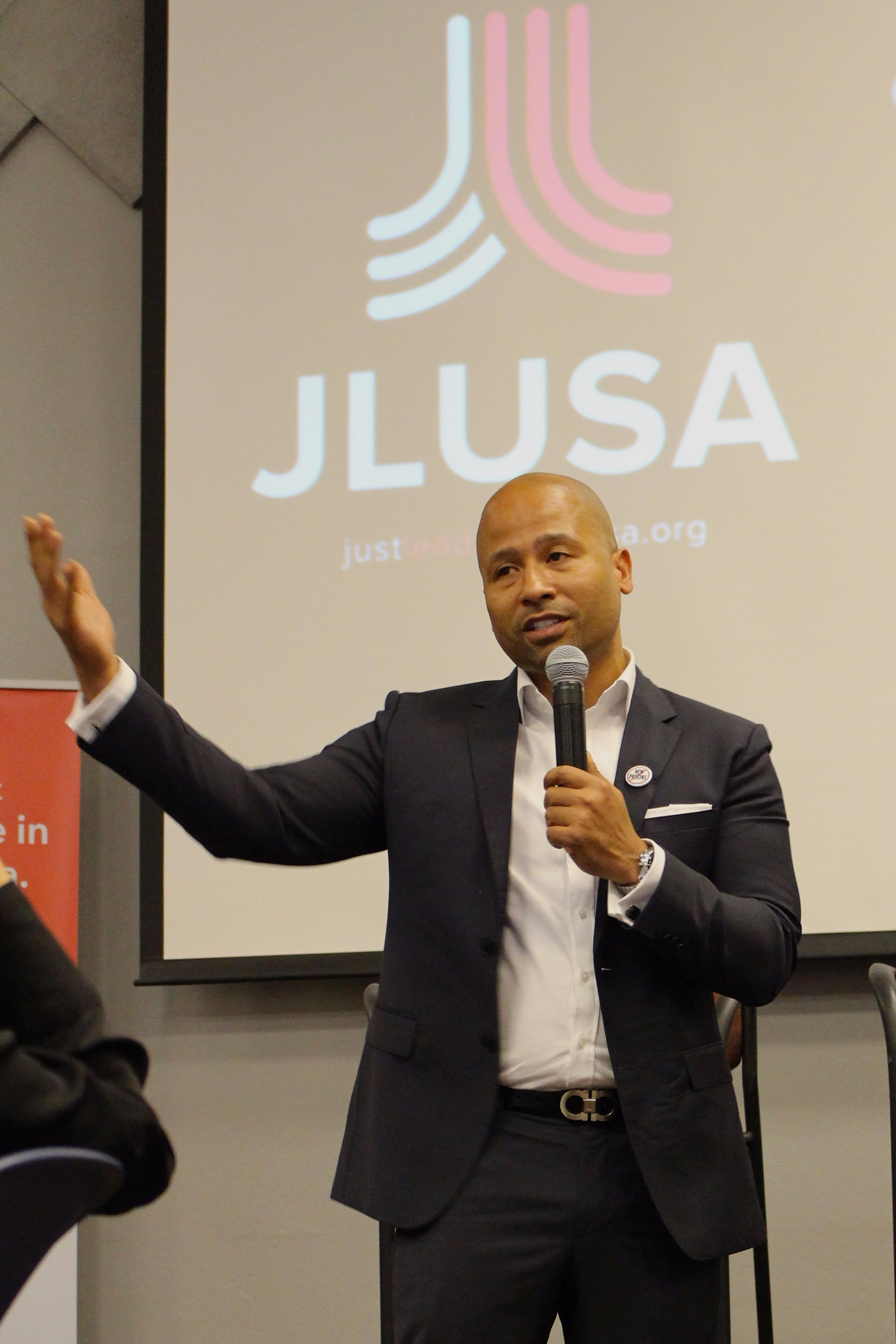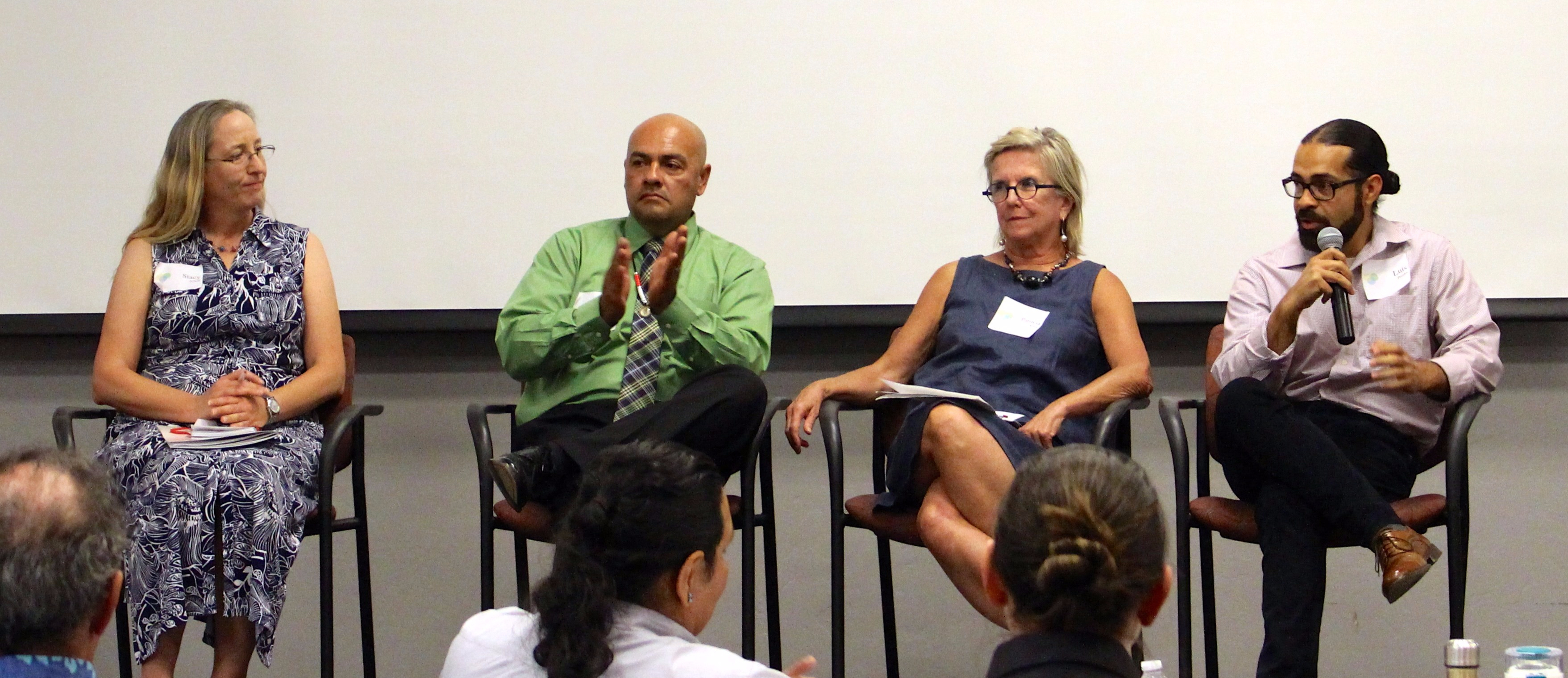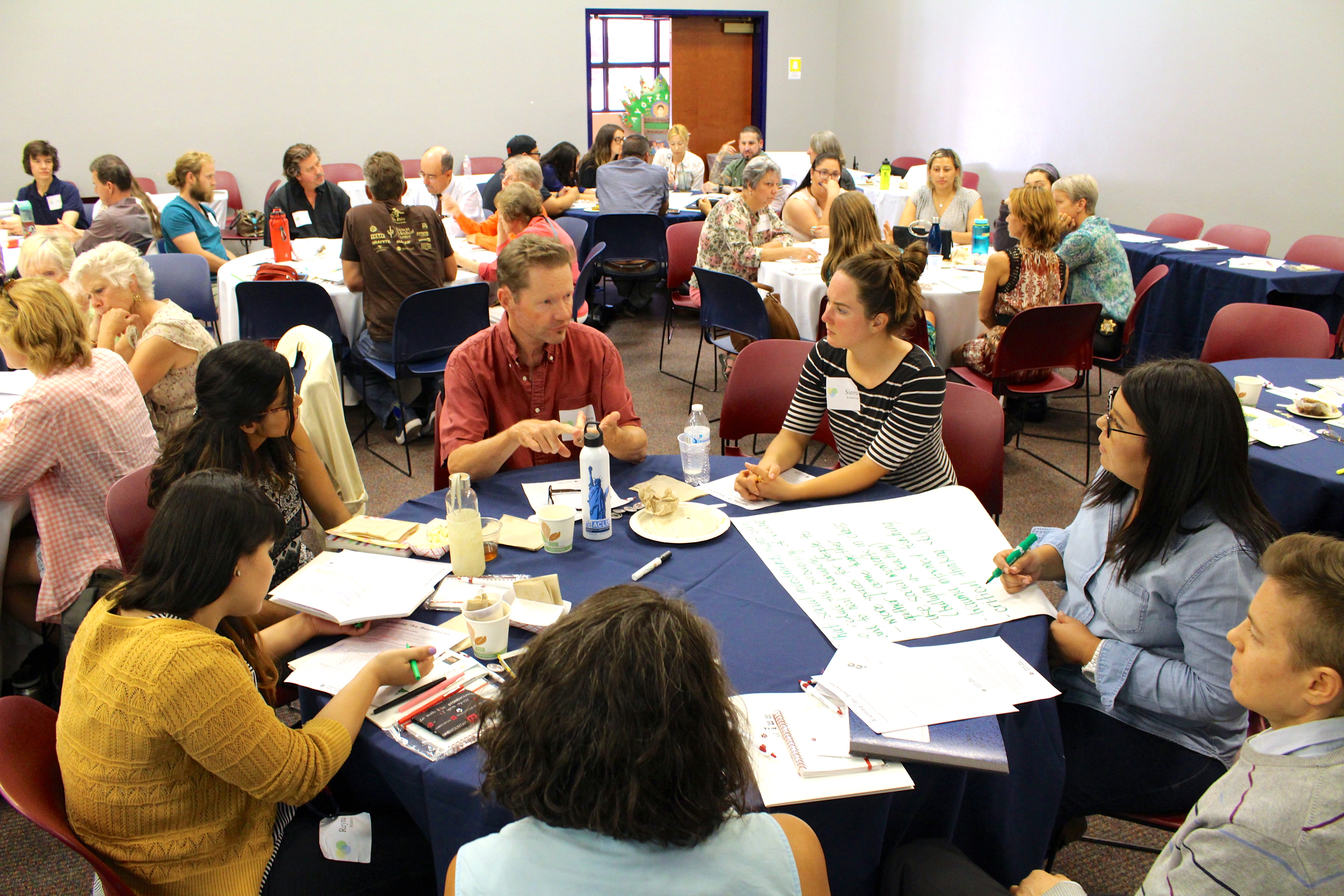I met Reframing Justice Program Coordinator Dr. Grace Gámez to talk about volunteering for AFSC Arizona the week before the May 2017 conference on Blurring the Boundaries: Trauma and Healing Justice that she and her colleagues organized. I was drawn to the focus on challenging a legally sanctioned system that inflicts and perpetuates harm, rather than preventing or mitigating it as the state of Arizona claims. Attending the conference and writing about what I observed sounded like an excellent way to learn more.
AFSC Arizona Director Caroline Isaacs opened the event by informing the audience that the next few hours would be about considering new ways of thinking, asking different questions, and uncovering the missing truth.
Connecting Through Stories
Relating personal stories—from a range of directly impacted perspectives—was the method of choice at the conference to communicate the intimate relationship between trauma and people
who have been through the criminal punishment system either as the cause or sufferer of harm. I don’t think any other approach could as effectively convey the inherent need for human connection, empathy, and respect in the context of justice.

Keynote speaker Glenn Martin demonstrated this by describing his violent introduction to prison at 16 years old. Nearly 30 years later he founded JustLeadershipUSA, an organization focused on criminal justice reform, and within a few months attracted enough national acclaim for his organizing efforts to earn an invitation to speak at the White House. But he still wore the “scarlet letter” of humiliation and punishment: Glenn was labeled a security threat and detained by White House staff before he could get to the room where he was scheduled to talk about the long-term damaging effects of correctional policies.
Along with the deep irony, I was struck by how Glenn’s experience breathed life into many of the concepts used in political debates dealing with law enforcement, corrections, and public safety. Glenn’s story reflects the bitter reality of perpetual punishment and even more disturbing cycle of trauma that blurs the socially constructed boundaries between people who have experienced harm and people who have caused harm.
Adjusted Perceptions
Besides the real-life accounts of trauma, many of the conference speakers rooted their commentaries in scientific research to support the argument that trauma is a consistent outcome of state-imposed correctional control. Keynote speaker Dr. Monica Casper, an associate dean in the University of Arizona College of Social and Behavioral Sciences and critical trauma studies expert, provided multidisciplinary insight into the issue. She started with a look at how the original meaning of the word trauma signified a wound (physical, emotional, or both) that “takes up residence in the body” through visceral memory, causing primal reactions when triggered. The expanded definition of trauma helped me recognize the need to radically shift common assumptions about responsibility. In this new framework, who or what is accountable for trauma outcomes moves to a more credible shared position between the system, society, and people processed, categorized, and disposed of as “offenders.”
In a less direct but just as substantive sense, I realized that shared responsibility—for both harm and safety—includes communities. It’s why Glenn Martin recommended we “lift up” and “listen to” formerly incarcerated people and survivors, and acknowledge they are one and the same. It also explains why Dr. Casper turned to community when she concluded her talk with ways to heal from trauma. For a model of what that might look like, she asked the audience to consider the implications of elephants raising their young in intergenerational groups. When a community member is hurt, it sends an audible distress signal and the others immediately respond like concerned caretakers. While humans obviously have the capacity for this kind of functional empathy, most of us in Western culture seem to need some training.
Constructing Collaboration
Enter the four-member panel of local experts working on the battlefields of trauma. They each represented theory in action. After introducing themselves and what their work involves, they responded to questions from Dr. Gámez about how trauma “shows up” in their respective fields and what they see as solutions.
- Stacy Scheff, a local attorney who practices civil rights law for incarcerated people, admitted thinking prisoners were “bad” before she was hired to ensure inmates in solitary confinement were provided basic needs like access to fresh air and sun. She then became so adept at legal arguments showing state responsibility for harm that she was fired by a democratic politician worried about his public image.
- Luis Perales, director of Changemaker High School, connected with the effects of trauma he saw in his brother’s struggle with law enforcement and the education system. As a transformative educator, he uses the “currency of hope” to make schools places of trust and support.
- Dr. Patricia Kelly, who teaches health classes in women’s prisons, confirmed the higher rates of chronic physical and mental illness in prison are tied to daily production of stress hormones. She recommended “resilience building” through positive feedback as crisis treatment.
- Manny Mejias, a reentry coordinator for Pima Prevention Partnership and founder of Choices, a nonprofit organization for system-involved people and their families, clarified the kind of stress response he lived with for 20 years in prison. “It wasn’t fight or flight…[but instead] “fight or die.” He uses what he learned from being in the punishment system in his roles working with released individuals.
I appreciated how the range of expertise and related perspectives in the panel echoed the complexity of trauma and demonstrated a variety of ways to effectively address it as a community. The panel structure was essentially an illustration of the kind of collaboration necessary to solve the problem we had gathered here to address. Luis described it as including everyone who is impacted at the table. And then engaging in uncomfortable conversations.
 The roundtable discussion, as the last part of the conference, gave the audience an opportunity to participate in the uncomfortable conversation leading to solutions.
The roundtable discussion, as the last part of the conference, gave the audience an opportunity to participate in the uncomfortable conversation leading to solutions.
The smaller, more informal group setting was more manageable to think about how I would answer questions like What is missing from the response of the justice system to harm and trauma? And, What is needed for a community to be sustainable and healthy? Another bonus was learning how my tablemates interpreted the conference presentations and applied that, based on their own experiences, to the roundtable.
The practice felt like a precarious first step. But it was progress, and the printed questionnaire, time limit, and concluding check-in helped keep us on track. I got the impression we were now prepared to keep going.
Completing the Healing Process
For me the top takeaway of the conference was Glenn Martin’s “Lead with us, not for us.” It resonates not only because of the inherent authenticity and expertise of leaders with direct experience, but also the actuality of healing from trauma by holding criminally punished people as valuable, capable, contributing members of society. Glenn’s emphasis on “bringing people from the margins to the center” reiterated this message, and the conference itself served as an illustration. It’s a message that needs to be repeated in many different ways.

This post was written by AFSC-AZ volunteer, Dora Rollins. Dora was previously the Publications Editor for Washington State University at Pullman. She holds a Masters degree in Communications from Washington State University, and a Bachelors degree in English and Business from Walla Walla University.
Categories: Blog, Events, News & Updates, Reframing Justice